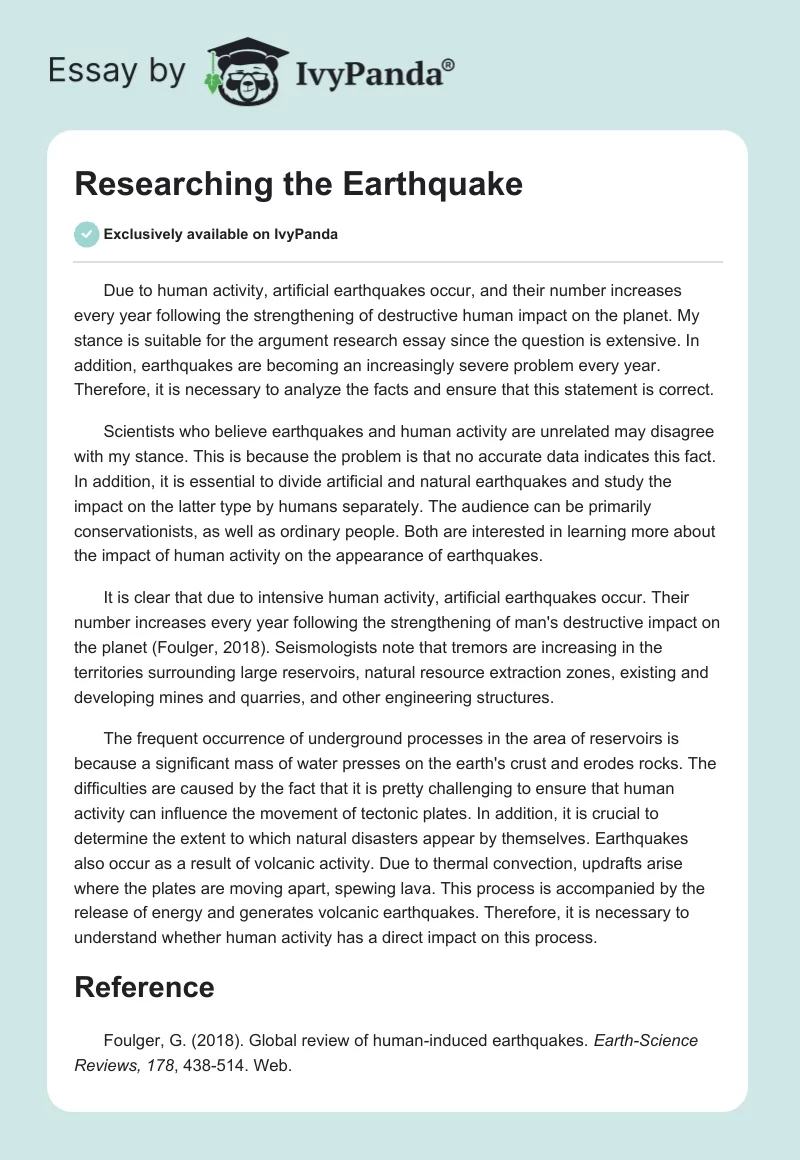Due to human activity, artificial earthquakes occur, and their number increases every year following the strengthening of destructive human impact on the planet. My stance is suitable for the argument research essay since the question is extensive. In addition, earthquakes are becoming an increasingly severe problem every year. Therefore, it is necessary to analyze the facts and ensure that this statement is correct.
Scientists who believe earthquakes and human activity are unrelated may disagree with my stance. This is because the problem is that no accurate data indicates this fact. In addition, it is essential to divide artificial and natural earthquakes and study the impact on the latter type by humans separately. The audience can be primarily conservationists, as well as ordinary people. Both are interested in learning more about the impact of human activity on the appearance of earthquakes.
It is clear that due to intensive human activity, artificial earthquakes occur. Their number increases every year following the strengthening of man’s destructive impact on the planet (Foulger, 2018). Seismologists note that tremors are increasing in the territories surrounding large reservoirs, natural resource extraction zones, existing and developing mines and quarries, and other engineering structures.
The frequent occurrence of underground processes in the area of reservoirs is because a significant mass of water presses on the earth’s crust and erodes rocks. The difficulties are caused by the fact that it is pretty challenging to ensure that human activity can influence the movement of tectonic plates. In addition, it is crucial to determine the extent to which natural disasters appear by themselves. Earthquakes also occur as a result of volcanic activity. Due to thermal convection, updrafts arise where the plates are moving apart, spewing lava. This process is accompanied by the release of energy and generates volcanic earthquakes. Therefore, it is necessary to understand whether human activity has a direct impact on this process.
Reference
Foulger, G. (2018). Global review of human-induced earthquakes. Earth-Science Reviews, 178, 438-514. Web.

